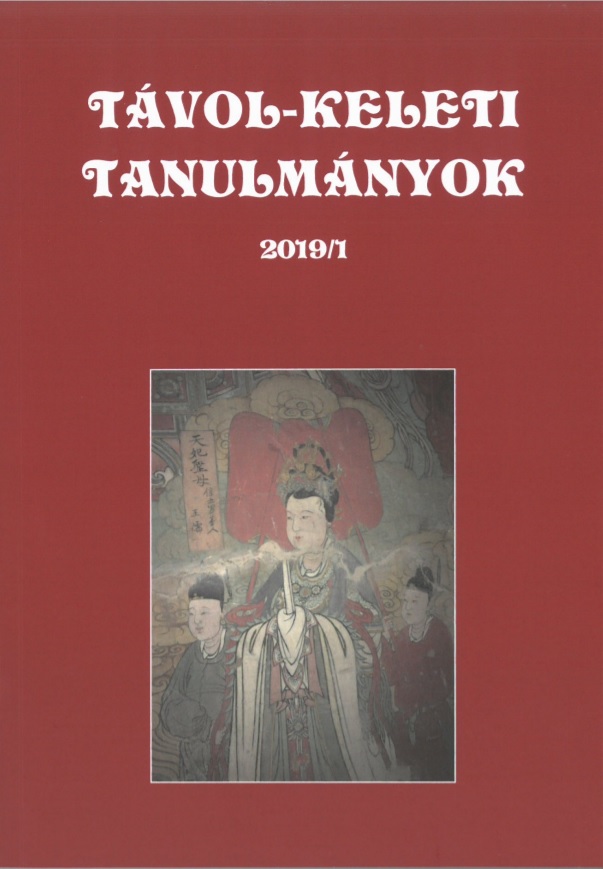Megjelent 2020-03-30
Kulcsszavak
- hangos olvasás,
- kínai mint idegen nyelv,
- nyelvtanulás,
- kiejtés
Hogyan kell idézni
Copyright (c) 2020 a szerző(k)

This work is licensed under a Creative Commons Attribution-NonCommercial 4.0 International License.
Absztrakt
This paper discusses the use of reading aloud as a technique in the teaching of pronunciation to learners of Chinese as a foreign language, emphasizing the importance of identifying and catering for the learners’ own attitudes. A questionnaire-based survey of university-level learners reveals an interesting difference between their rational belief in the usefulness of reading aloud and their emotional reactions to the idea. On the basis of these findings, the paper describes ways of including reading aloud in Chinese language courses without making the experience too threatening.
Hivatkozások
- Bowen, T. – Marks, J. 1992. The pronunciation book: Student-centered activities for pronunciation work. New York: Harlow Longman.
- Cheng, T. 程棠 1996. Duiwai hanyu jiaoxue zhong de jige wenti 对外汉语教学中的几个问题. Yuyan jiaoxue yu yanjiu 语言教学与研究 3: 4–17.
- Cheng, T. 程棠 2000. Duiwai hanyu jiaoxue mudi yuanze fangfa 对外汉语教学原则方法. Beijing: Huayu chubanshe.
- Gibson, S. 2008. Reading aloud: A useful learning tool? ELT Journal 62/1: 29–36. https://doi.org/10.1093/elt/ccm075
- Lin, T. 林焘 1996. Yuyin yanjiu he duiwaihanyu jiaoxue 语音研究和对外汉语教学. Shijie hanyu jiaoxue 世界汉语教学 3: 18–21.
- Liu, X. 刘珣 2000. Duiwai hanyu jiaoyuxue yinlun 对外汉语教育学引论. Beijing: Beijing yuyan wenhua daxue chubanshe.
- Ma, B. H. 马碧红 2010. Shilun Putonghua langdu de texing yu jiqiao 试论普通话朗读的特性与技巧. Gansu: Sheke zongheng 社科纵横 25 (9): 85–86.
- Richard Schmidt 2010. Attention, awareness, and individual differences in language learning. In: W. M. Chan, S. Chi, K. N. Cin, J. Istanto, M. Nagami, J. W. Sew, T.
- Suthiwan, & I. Walker (eds.) Proceedings of CLaSIC 2010, Singapore, December 2-4. Singapore: National University of Singapore, Centre for Language Studies, 721–737.
- Stevick, E. 1989. Success with foreign languages: Seven who achieved it and what worked for them. Hemel Hempstead: Prentice Hall International.
- Stroh E. N. 2012. The effect of repeated reading aloud on the speaking fluency of Russian language learners. MA Thesis, Brigham Young University, https://scholarsarchive.byu.edu/etd/3325/. (2019. november 2.)
- Yang, C. Y. 杨彩云 2010. Duiwai hanyu langduke jiaoxue yanjiu 对外汉语朗读课教学研究, 33: Sichuan: Sichuan shifan daxue.
- Zhang, S. 张颂 2010. Langduxue 朗读学, 161. Beijing: Zhongguo chuanmei daxue chubanshe.
- Zhao, J. M. 赵金铭 2006. Duiwaihanyu kouyu jiaoxue yanjiu 对外汉语口语教学研究. Beijing: Commercial Press.
- Zheng, J. 郑军 2009. Duiwai hanyu jiaoxue zhong langdu jiaoxue de tansuo 对外汉语教学中朗读教学的探索. Yuwen xuekan (jiaoyuban) 语文学刊(教育版) 4: 129–131.
- Zhu, Z. X. 朱智贤 1989. Xinlixue dacidian 心理学大辞典. Beijing: Beijing shifan daxue chubanshe.

